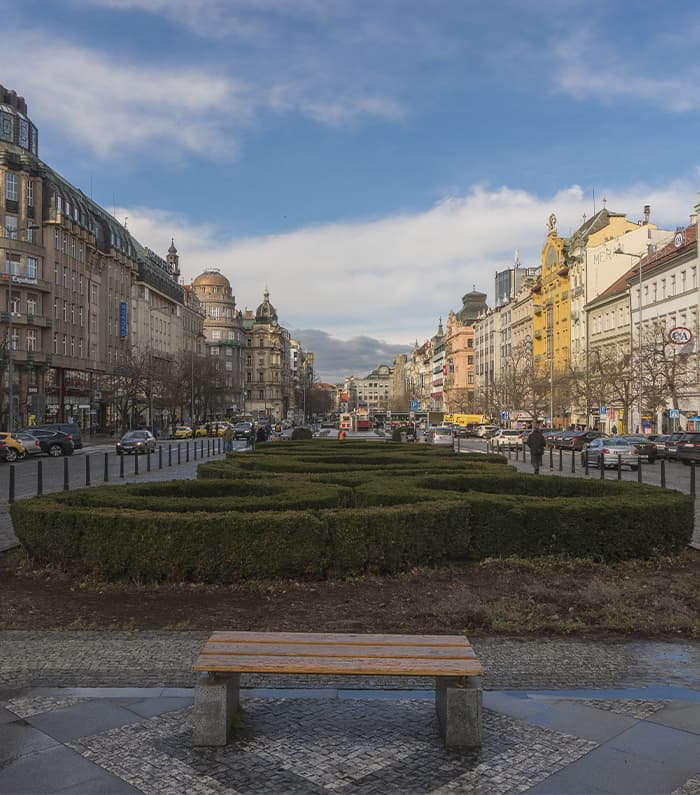Wenceslas Square

The geographical location of Wenceslas Square leaves no chance to bypass it. Located in the center of Prague, it is accessible via branches from many busy streets of the capital, such as Na Příkopě, 28. Října, Jindřišská, Vodičkova, Štěpánská, Opletalova, Ve Smečkách, Krakovská.
Václavák, as the locals call it, is the central boulevard, crowded even at night.
Historical Info
Wenceslas Square entered the historical chronicle of the Czech Republic, it was here:
- In 1945, the end of World War II was announced;
- On April 28, 1961, as part of the “Mission to the World” world tour, a solemn parade with Yuri Gagarin was held. Incidentally, the Czech Republic was the first foreign country to visit, just two weeks after the crew landed on Earth;
- Jan Palach, a student at Charles University, committed self-immolation on January 16, 1969 to protest the occupation of Czechoslovakia by Soviet Union troops and other Warsaw Pact countries.
Main sights of the square
The landmark and the symbol of Prague is the equestrian sculpture of St. Wenceslas, erected in 1912 according to the project by Josef Wenceslas Myślbek. The bronze Wenceslas is mounted on a horse with a spear in his right hand. The pedestal is surrounded by saints Prokop, Vojtech, Ludmila, and Anežka.
Features of the architectural style
Wenceslas Square is recognized as one of the largest squares in the world, its length is 750 m long, the total area is 45 thousand square meters. Along the square was built more than 60 buildings. You can get to the area through the courtyards, which are available for almost every building.
Modern buildings date from the 19th and 20th centuries, when Art Nouveau and Czech Cubism supplanted Renaissance and Classicism. Many of the buildings were unofficially dubbed “palaces,” but as you will see later, not all of the structures shine with refinement.
National Museum
The National Museum includes exhibits of various kinds. One of them, called Pantheon, is a collection of sculptural portraits of great rulers, cultural figures and political leaders of the Czech Republic. The second is the Museum of Natural Sciences and History. The third is a collection of ancient books (about 1.5 million volumes) and manuscripts (8000 titles).
The front entrance of the National Museum is decorated with statues symbolizing the might of Bohemia, its major waterways and the Krkonoše mountain range.
Lucerna
Lucerna is a cultural, entertainment and commercial center in Prague. It was built in 1907-1921 by the architect Václav Havel, the stepfather of the former president of the Czech Republic.
The building was innovative in many ways, including the country’s first movie theater, a staggeringly large concert hall, a combination of stores, restaurants and music bars.
At that time, bold design solutions were the use of reinforced concrete structures, a combination of glass and stone elements. Lucerne was reconstructed in 1969-1970, and the tourist attraction and the infamous inverted horse by David Černý appeared in 1999.